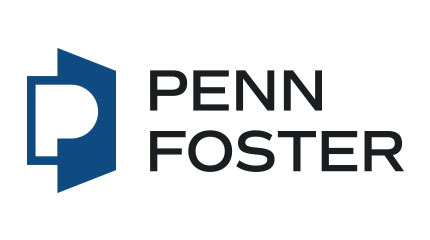Open the Door to a New Career with Penn Foster
NYICD is no longer accepting new students but you can still take the next steps toward a new career or further your education with our affordable, online sister school, Penn Foster. With over 130 years of experience in distance education and a broad range of accredited career, college, and certificate programs in in-demand fields, you can open the door to a new job, build industry-recognized skills, and take the next step toward the life you want – still completely online, at your own pace.
In-Demand Healthcare Career Training with Penn Foster
Take the first steps toward an in-demand, rewarding career in healthcare with Penn Foster. With accredited online programs in clinical and administrative roles, you can build the skills you need on your schedule, online.
Personalized Support from Experts in Your Field of Study

Every medical office, surgical center or hospital setting needs help behind the scenes to ensure that all day-to-day routines run smoothly.
Completing our medical office assistant course will help you join the fast-growing field of healthcare.
Course Description
Our Medical Office Assistant course will teach you all the administrative and clinical skills necessary to effectively maintain a medical office environment – from scheduling appointments and maintaining patient records. You will be ready to take the Certified Medical Administrative Assistant Exam administered by the National HealthCareer Association.
Medical Office Assistant Course Outline
Unit 1: Medical and Body Systems Terminology
1.1 Medical TerminologyIn Lesson 1.1: Medical Terminology, we will explain the basis of medical terminology. We will also explain how to identify the four major word parts and how to build and define medical terms from these word parts.
Lesson 1.2: Body Systems 1 is learning a series of small word parts and their meanings, which are put together in different combinations to form medical terms. Additionally, we will discuss various body systems such as, the digestive system, the cardiovascular system, and the nervous system.
In Lesson 1.3: Body Systems 2, we will further discuss small word parts and their meanings, which are put together in different combinations to form medical terms. Additionally, we will discuss various body systems such as, Gynecology, Obstetrics, and Neonatology.
In Lesson 1.4: Disease Processes and Surgical Procedures, we will explain disease processes and their related surgical procedures and how they are an integral part of coding and reimbursement. In addition, we’ll provide an overview of major chronic diseases, major infectious diseases, and the treatments that apply to each disease category.
Unit 2: Introduction to Medical Assisting
2.1 The Profession of Medical AssistingIn Lesson 2.1: The Profession of Medical Assisting, discuss the history of the medical-assisting profession. We will identify educational opportunities available to medical-assisting professionals, accrediting agencies for medical-assisting programs and career opportunities available for medical assistants. Additionally, we will define the administrative duties of medical assistants and the clinical skills needed by medical assistants.
In Lesson 2.2: Medical Law and Ethics, we will define terms for medical law and ethics and the role of Hippocratic Oath in medicine today. We will also review the “Four Ds” of negligence and the seven points of the AMA Principles of Medical Ethics.
In Lesson 2.3: Medical Terminology Review, we will provide definitions of medical terms and explain how to break down medical terms in order to define them. Additionally, we will review the correct pronunciation of medical terms.
In Lesson 2.4: Navigating and Communicating in the Medical Office, we will define values, attitudes, and behavior and identify the role they play in self-awareness. We will explain how verbal and nonverbal communication differ. In addition, we will identify safety hazards and OSHA standards and guidelines.
Unit 3: Administrative Medical Assisting
3.1 Patient Reception and Appointment SchedulingIn Lesson 3.1: Patient Reception and Appointment Scheduling, we will focus on understanding terms related to patient reception and appointment scheduling and understanding the different equipment used in scheduling. We will also review the receptionist’s responsibilities, office opening and closing procedures, and legal and ethical issues related to being a medical receptionist.
In Lesson 3.2: Technology and Correspondence in the Medical Office, we will define terms for technology and correspondence in the medical office, discuss the elements of office flow, and identify three methods to help keep medical records confidential on computer systems.
In Lesson 3.3: Medical Records, we will define and understand terms related to medical records, discuss the types of medical records, and identify medical record storage units. Additionally, we will discuss legalities of medical records and how to properly dispose of medical records.
In Lesson 3.4: Billing, Collections, and Financial Management, we will focus on understanding the terms used in billing, collections, and financial management in health care. We will explain how fees are determined, and how to handle aging accounts.
In Lesson 3.5: Medical Insurance and Claims, we review insurance policies and the terminology associated with medical insurance and medical insurance claims. In addition, we will explain legal issues with regard to medical claims submissions.
In Lesson 3.6: Medical Coding, we will focus on the terminology for medical coding, diagnostic coding, and the ICD-9-CM and ICD-10-CM/PCS coding process. Additionally, we will review the basics of CPT coding.
In Lesson 3.7: Medical Office Management, we will define the systems approach to medical office management and the terminology used in medical office management. We will also discuss the importance of monthly planning meetings, time management, and the difference between a personnel policy manual and an office policies and procedures manual
Unit 4: Clinical Medical Assisting
4.1 Infection Control and Vital SignsIn Lesson 4.1: Infection Control and Vital Signs, we will discuss the importance of understanding vital signs and the information that each one conveys. We will also review standard precautions for infections, how sanitization, disinfection, and sterilization differ, and MRSA.
In Lesson 4.2: Assisting with Physical Examinations and Medical Specialities, we will define terms associated with physical examinations and various medical specialties. Additionally, we will discuss equipment used during physical examinations and the proper techniques for physical examinations. We will also explain how to prepare patients for exams, tests, and procedures and how to perform a variety of examinations and diagnostic tests.
In Lesson 4.3: Assisting with Life Span Specialties, we will be focusing on pediatrics and geriatrics. We will define and spell terms that are often encountered, and identify childhood growth and development patterns. Additionally, we will discuss how to identify three types of eating disorders and review the aging process and the changes the body goes through.
In Lesson 4.4: Assisting with Minor Surgery and Medical Emergencies, we will define and understand terms related to minor surgeries and emergencies and the different types of surgical instruments and explain how to handle them. In addition, we will identify the signs and symptoms of respiratory distress and chest pain and review the difference between insulin shock and diabetic coma.
In Lesson 4.5: The Clinical Laboratory and Microbiology, we introduce the role of the clinical laboratory in patient care. We also discuss the medical assistant’s role in the clinical laboratory. Additionally, we describe the relationship between microbiology and patient care and how microorganisms are classified.
In Lesson 4.6: Urinalysis, Phlebotomy, and Hematology, we discuss the tests that deal with the blood and urine. We define the terms associated with urinalysis, phlebotomy, and hematology and the steps for clean-catch urine specimens. Additionally, we describe the proper procedures and equipment used in blood collection and how to prepare blood specimens.
In Lesson 4.7: Radiology and Electrocardiography, we introduce you to common terms used in radiology and electrocardiography and the basic procedures and positions for obtaining an x-ray. We also review different types of imaging and radiation and describe safety precautions to use when obtaining x-rays.
In Lesson 4.8: Pulmonary Function, Physical Therapy, and Rehabilitation, we explain FVC, FEV1, and MMEF and the difference between obstructive and restrictive pulmonary disease. Additionally, we explain range of motion, AROM, AAROM, and PROM.
In Lesson 4.9: Pharmacology and Administering Medications, we discuss the difference between generic and brand name drugs and precautions to take when administering drugs. In addition, we describe how to correctly administer oral and parenteral medications and OSHA standards with regard to needle sticks.
In Lesson 4.10: Patient Education, Nutrition, and Mental Health, we define terms used when discussing patient education, nutrition, and mental health. We also explain the process of a teaching plan and how to adapt education for special needs or different cultures. Additionally, we explain the difference between LDL and HDL with regard to cholesterol and the 13 major diagnostic categories of mental illness.
In Lesson 4.11: Professionalism and Career Opportunities, we introduce you to terms associated with professionalism and careers in this industry and the importance of professional skills. We also explain the value of professional skills, and describe employer expectations.
What You Get
- Instant access to high-quality course materials
- One-to-one mentorship from a professional in the field
- Video training featuring tips from industry veterans
- Certification preparation materials including free practice tests
NYICD offers convenient online training to anyone looking to gain the independence that comes with a new career. Study anytime, anywhere at your own pace and get certified in a matter of months. Call 1-800-239-9275 or enroll online today.







